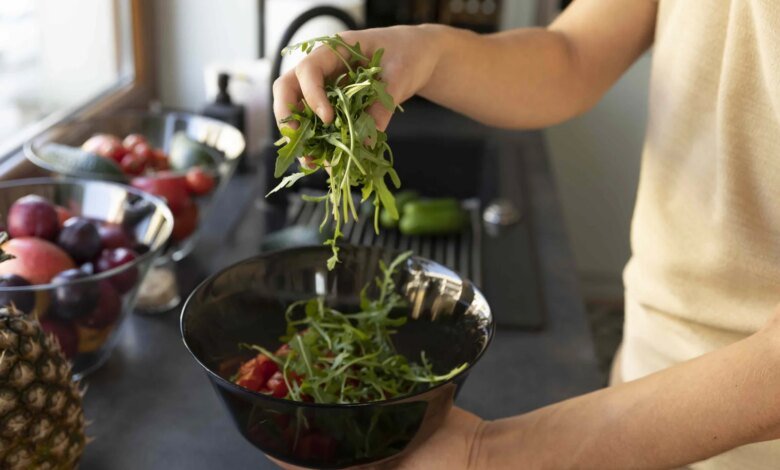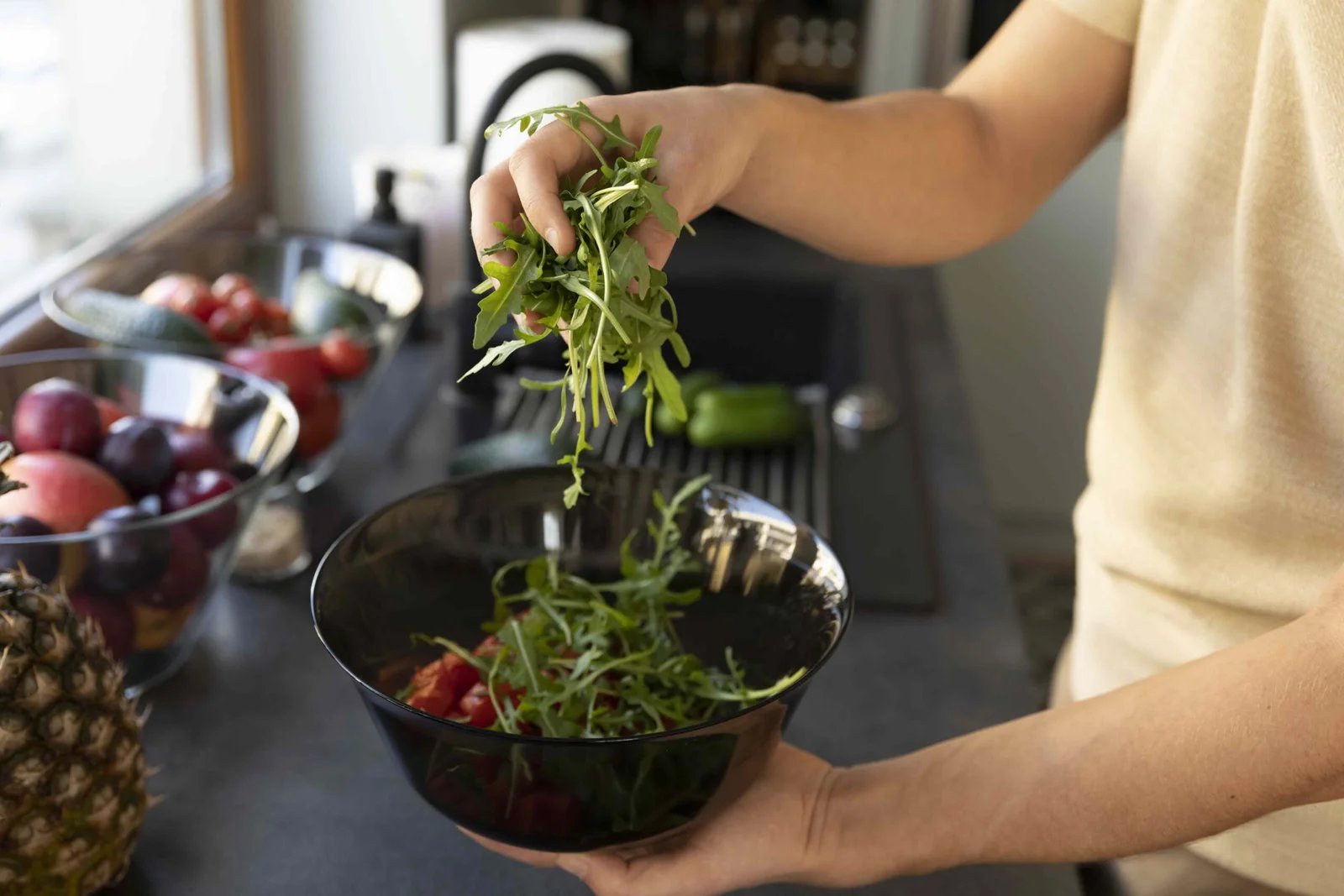8 High-Fiber Foods To Eat For Hemorrhoid Relief

8 High-Fiber Foods To Eat For Hemorrhoid Relief

Many high–fiber foods can help support your overall gut health by keeping your digestion regular and making stools easier to pass. This can reduce the need to strain during bowel movements, which is important for managing hemorrhoids. Consider these options to ease your hemorrhoids, which may have other benefits.
Liudmila Chernetska/Getty Images
Known as one of the highest-fiber foods, lentils are packed with 15.6 grams of fiber per cupmore than half of the recommended daily value. They’re also a great source of plant-based proteinwith 17.9 grams of protein per cup.
The fiber in lentils supports gut health by adding bulk to your stool and helping it move easily through your digestive tract. This promotes regular bowel movements and helps reduce straining, both are important for preventing and managing hemorrhoids.
lizfernandezg / Getty Images
Similar to lentils, beans provide over 15 grams of fiber in a 1-cup servingwhich is about 50% of the recommended 25-35 grams of daily fiber that research from 2018 suggests is needed to treat hemorrhoids.
Black beans are also high in other key nutrients, such as folate, a B vitamin essential for fetal development and red blood cell production.
Other beans, like kidney and garbanzo beans, are also great sources of fiber to help treat or manage hemorrhoids.
Whitestorm / Getty Images
Quinoa is a whole grain nutritional powerhouse due to its fiber and plant-based protein content, providing 5 grams of fiber per cup (cooked), as well as 8 grams of protein. It’s also rich in minerals like magnesium and phosphorus, which are important for muscle function, energy production, and bone health.
The fiber in quinoa is 78% insoluble, which adds bulk to your stool and helps move digestion along more efficiently. Eating foods high in insoluble fiber can help reduce pain and discomfort from hemorrhoids.
Pimonpim Tangosol / Getty Images
Brown rice is another whole grain-rich food, offering over 3 grams of fiber in a one-cup serving. It also provides over 20% of your daily magnesium needs and at least 85% of your daily manganese, two minerals that support energy metabolism, bone strength, and muscle function.
Unlike white rice, brown rice retains its bran layer, giving it more than twice the fiber. This layer also contains prebiotics, which are non-digestible compounds that feed healthy gut bacteria.
By supporting a balanced gut microbiome and reducing inflammation, the fiber in brown rice can help improve digestion and ease hemorrhoid symptoms.
Elena_Danileiko / Getty Images
One whole cooked artichoke provides almost 7 grams of fibermaking it an excellent food for hemorrhoids.
In particular, artichokes contain inulin, a type of soluble fiber that supports gut health by nourishing healthy bacteria. They also provide insoluble fiber that promotes bowel movements.
In addition to fiber, artichokes have an impressive nutritional profile. From one artichoke, you’ll get 17% of the daily value for vitamin C, which supports immune and skin health, and 22% of your daily value for folate.
KateSmirnova / Getty Images
A 100-gram serving (about one-half to one cup) of cruciferous vegetables like arugula, broccoli, Brussels sprouts, bok choy, cabbage, and cauliflower provides up to 4 grams of fiber.
These veggies are excellent sources of insoluble fiber that prevents constipation, an important factor in easing hemorrhoids.
They also contain glucosinolates, which are natural compounds that can help ease hemorrhoid discomfort and swelling, often caused by inflammation in the gut.
LeandroHernandez / Getty Images
Apples are a high-fiber fruit with properties that support both the prevention and treatment of hemorrhoids. One medium red delicious apple provides about 5 grams of fiberor about 18% of your daily fiber needs.
A key component of apples is pectin, a type of soluble fiber that forms a gel-like consistency in your digestive system. It helps to soften and bulk up stool, making bowel movements easier and reducing the strain that can worsen hemorrhoid symptoms.
In addition to fiber, apples are rich in water, which plays an essential role in moving fiber smoothly through your digestive tract.
KPS / Getty Images
Like apples, kiwis are full of fiber and water, which help support digestion and ease hemorrhoid symptoms.
One kiwifruit has over 2 grams of fiber and is 84% water, both of which help soften stool and make it easier to pass.
Kiwis also contain zyactinase, a natural extract containing enzymes, fiber, and prebiotics that support regular, healthy bowel movements.
When managing hemorrhoids, avoiding certain low-fiber and dehydrating foods and beverages can help reduce symptoms, prevent constipation, and support healing. Here are some foods it may help to avoid with hemorrhoids:
- Alcohol
- Caffeinated beverages
- Dairy products
- Processed and fast foods
- Red and processed meats
- Refined carbs like white bread, white rice, regular pasta, and pastries
- Spicy foods
- Sugary foods and beverages
Here are some practical tips to help you add fiber to your diet effectively and comfortably:
- Stay hydrated: Fiber works best when there’s enough water to help move it through your system. Aim to drink water consistently throughout the day to help keep digestion smooth and prevent constipation.
- Increase fiber intake gradually: Adding too much fiber too quickly can lead to gas, bloating, or cramping. Instead, build up your fiber intake slowly over several days to help your body adjust.
- Eat a variety of high-fiber foods: Soluble and insoluble fiber both play important roles in managing hemorrhoids. Including a mix of fruits, vegetables, whole grains, and legumes ensures a healthy balance that supports regularity and gut health.
- Choose whole foods when possible: Whole foods like fruits, veggies, beans, and whole grains provide not only fiber, but also important vitamins, minerals, and antioxidants that support digestive health.
- Include fiber in every meal: Add fruit to breakfast, enjoy a salad or beans at lunch, and serve whole grains with dinner to keep your fiber intake steady through the day.
- Snack smart: Reach for high-fiber options like raw vegetables with hummus, a piece of fruit, or a handful of nuts instead of processed snacks.
- Add fiber into familiar dishes: Stir beans into soups or pasta, toss extra veggies into casseroles and sauces, or blend fruits into smoothies and yogurt for an easy fiber boost.
Including a variety of high-fiber foods in a well-balanced diet can help with hemorrhoids by relieving constipation, lowering inflammation, and supporting overall gut health. Turn to plant-based whole foods such as legumes, whole grains, fruits, and vegetables.
Disclaimer: This news article has been republished exactly as it appeared on its original source, without any modification.
We do not take any responsibility for its content, which remains solely the responsibility of the original publisher.
Author: Brianna Tobritzhofer, MS, RD, LD
Published on: 2025-10-18 10:00:00
Source: www.health.com
Disclaimer: This news article has been republished exactly as it appeared on its original source, without any modification.
We do not take any responsibility for its content, which remains solely the responsibility of the original publisher.
Author: uaetodaynews
Published on: 2025-10-18 09:03:00
Source: uaetodaynews.com




